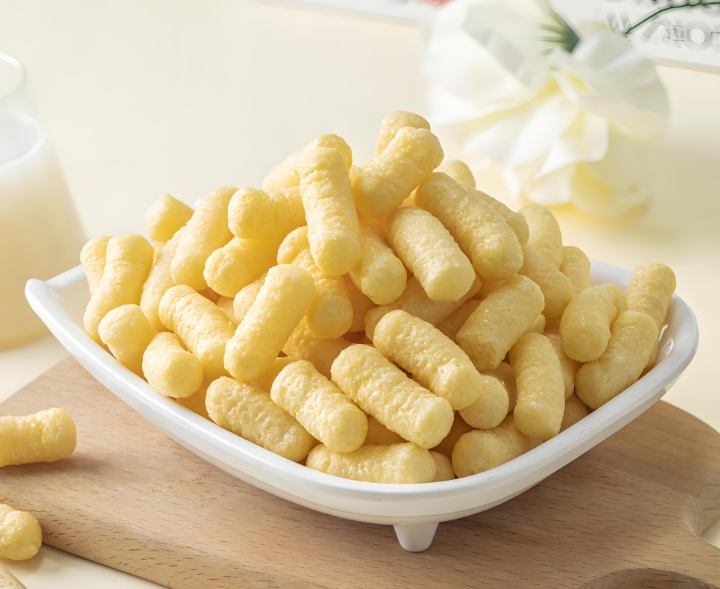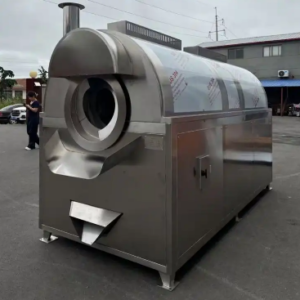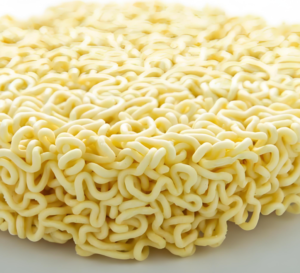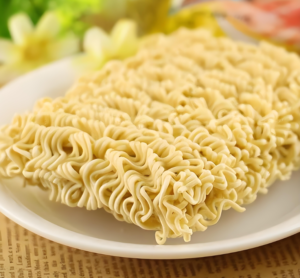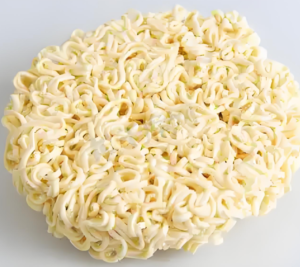Introduction and Applications of Puffed Foods
Puffed foods are a category of snacks and ingredients created through a process called puffing, which involves subjecting food materials to high temperature and pressure, causing them to expand and form a light, airy texture. This process enhances the sensory appeal and digestibility of the food, making puffed foods a popular choice worldwide. Below is an overview of the production process, characteristics, and applications of puffed foods.
Production Process of Puffed Foods
The production of puffed foods typically involves the following steps:
- Raw Material Selection
- Common raw materials include grains (corn, rice, wheat), legumes (soybeans, chickpeas), and tubers (potatoes, tapioca).
- The choice of raw material determines the final product’s texture, flavor, and nutritional profile.
- Conditioning
- The raw materials are cleaned, moistened, and sometimes pre-cooked to prepare them for puffing.
- Puffing
- Extrusion Puffing: The most common method, where the material is forced through an extruder under high temperature and pressure. Upon exiting the extruder, the sudden pressure drop causes the material to expand.
- Hot Air Puffing: The material is exposed to hot air, causing it to puff. This method is often used for grains like rice or wheat.
- Oil Puffing: The material is fried in hot oil, resulting in a crispy texture. This method is used for snacks like cheese puffs.
- Drying and Cooling
- The puffed products are dried to reduce moisture and cooled to stabilize their structure.
- Flavoring and Coating
- The puffed products are coated with flavors, such as salt, cheese, barbecue, or sweet caramel, to enhance their taste.
- Packaging
- The final products are packed in airtight containers to maintain freshness and extend shelf life.
Characteristics of Puffed Foods
- Light and Airy Texture: The puffing process creates a porous structure, making the food light and crunchy.
- Enhanced Digestibility: Puffing breaks down complex carbohydrates, making the food easier to digest.
- Versatile Flavors: Puffed foods can be tailored to a wide range of flavors, from savory to sweet.
- Long Shelf Life: Properly packaged puffed foods have a long shelf life, making them ideal for storage and distribution.
Applications of Puffed Foods
Puffed foods are widely used in various industries due to their unique texture, flavor adaptability, and nutritional benefits. Here are some of their key applications:
1. Retail Snacks
- Puffed foods are a popular ready-to-eat snack, available in supermarkets, convenience stores, and online platforms.
- Examples include cheese puffs, rice cakes, and puffed corn snacks.
2. Breakfast Cereals
- Puffed grains, such as rice or wheat, are used in breakfast cereals, often combined with dried fruits, nuts, and sweeteners.
- Examples include puffed rice cereals and muesli mixes.
3. Ingredients in Processed Foods
- Puffed foods are used as ingredients in other products, such as granola bars, trail mixes, and chocolate-coated snacks.
- Crushed puffed grains can be used as a topping for yogurt, ice cream, or desserts.
4. Baby Food
- Puffed grains and legumes are used in baby food due to their light texture and easy digestibility.
- They are often fortified with vitamins and minerals to meet nutritional needs.
5. Health and Specialty Foods
- Puffed foods are marketed as healthy snacks, with options like gluten-free, low-calorie, or organic varieties.
- Fortified puffed foods, enriched with protein or fiber, cater to health-conscious consumers.
6. Industrial Applications
- Puffed grains are used as a base for pet food and animal feed due to their high digestibility and palatability.
- They can also be used as a filler or binder in food processing.
7. International Markets
- Puffed foods are adapted to local tastes in different regions. For example, in Asia, puffed rice snacks are popular, while in the West, cheese-flavored puffed corn snacks dominate the market.
Innovations in Puffed Foods
- Healthier Options: Manufacturers are developing baked puffed snacks with reduced oil content and organic ingredients to meet consumer demand for healthier options.
- Exotic Flavors: Unique flavor combinations, such as truffle, honey mustard, or spicy mango, are being introduced to attract adventurous consumers.
- Sustainable Packaging: Eco-friendly packaging materials are being adopted to reduce environmental impact.
- Functional Foods: Puffed foods are being fortified with probiotics, vitamins, and minerals to offer additional health benefits.
Conclusion
Puffed foods are a versatile and widely loved category of snacks and ingredients, valued for their light texture, flavor adaptability, and nutritional benefits. From retail snacks to breakfast cereals and baby food, puffed foods have found applications in various industries. As consumer preferences continue to evolve, innovations in flavors, health benefits, and sustainability are likely to drive the growth of the puffed food market, ensuring its continued popularity worldwide.

